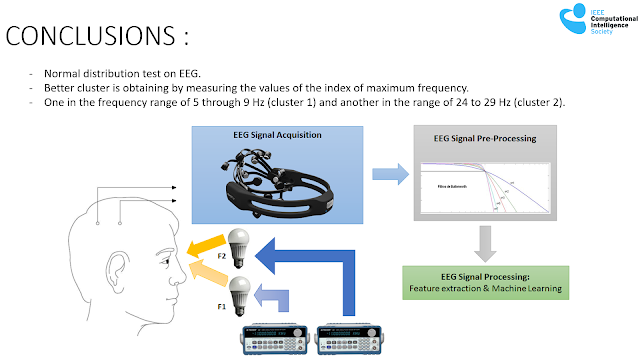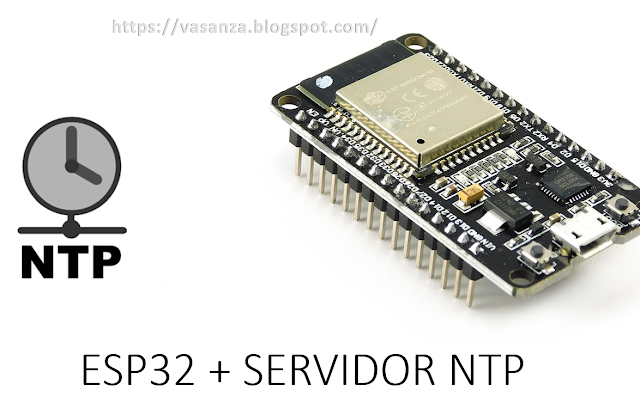▷ #Clustering of #EEG Occipital Signals using K-means ( #IEEE Ecuador Technical Chapters Meeting - #ETCM2016)
⭐⭐⭐⭐⭐ Presentation of the article Clustering of EEG Occipital Signals using K-means (IEEE Ecuador Technical Chapters Meeting - ETCM2016) from Victor Asanza Armijos
- ➡️ #EEG #Clustering #HumanMachineInterface #BCI #BrainComputerInterface #SSVEP #EMOTIV
- ➡️ ETCM: IEEE Ecuador Technical Chapters Meeting (ETCM2016)
- ⭐ Read full paper: https://ieeexplore.ieee.org/abstract/document/7750874
- ✅ Read Proceedings: https://ieeexplore.ieee.org/xpl/conhome/7743709/proceeding
- When using this resource, please cite the original publication:
- Abstract:
- Recent studies show that it is feasible to use electrical signals from Electro-encephalography (EEG) to control devices or prostheses, these signals are provided by the body and can be measured on the scalp to determine the intent of the person when it is observing a visual stimulus frequency range detectable by the human eye. This group of signals are very susceptible to noise due to voltage levels that are able to acquire. Therefore, in this work we propose a statistical analysis of the distribution of normal EEG signals in order to determine the need of a pre-processing to remove noise components from electrical grids or other possible sources. This preprocessing includes the design and use of a filter that will eliminate any signal component that is not in the operating frequency range of the EEG occipital area of the brain. Finally, we will proceed to use the k-means algorithm to cluster with signals according to their frequency and temporal characteristics.
- ✅ Conference content:
- ✅ References:
- J. R. Garcell, "Aportes del electroencefalograma convencional y el análisis de frecuencias para el estudio del trastorno por déficit de atención. primera parte", Salud Mental, vol. 27, no. 1, pp. 23, 2004.
- L. A. Riggs and P. Whittle, "Human occipital and retinal potentials evoked by subjectively faded visual stimuli", Vision Research, vol. 7, no. 5-6, pp. 441-451, 1967.
- G. Schalk and E. C. Leuthardt, "Brain-computer interfaces using electrocorticographic signals", IEEE reviews in biomedical engineering, vol. 4, pp. 140-154, 2011.
- I. Iturrate, C. Escolano, J. Antelis and J. Minguez, "Dispositivos robóticos de rehabilitación basados en interfaces cerebro-ordenador: silla de ruedas y robot para teleoperación", III International Congress on Domotics Robotics and Remote-Assistance for All Barcelona Spain, pp. 124-134, 2009.
- G. R. Bermúdez, P. J. G. Laencina, D. Brizion and J. R. Dorda, "Adquisición procesamiento y clasificación de señales eeg para el diseño de sistemas bci basados en imaginación de movimiento", Jornadas de introducción a la investigación de la UPCT, no. 6, pp. 10-12, 2013.
- J. V. Pinzón, R. P. Mayorga and G. C. Hurtado, "Brazo robótico controlado por electromiografïa", Scientia Et Technica, vol. 1, no. 52, pp. 165-173, 2012.
- K. Jerbi, J. Vidal, J. Mattout, E. Maby, F. Lecaignard, T. Ossandon, C. Hamamé, S. Dalal, R. Bouet, J.-P. Lachaux et al., "Inferring hand movement kinematics from meg eeg and intracranial eeg: From brain-machine interfaces to motor rehabilitation", IRBM, vol. 32, no. 1, pp. 8-18, 2011.
- N. A. Badcock, P. Mousikou, Y. Mahajan, P. De Lissa, J. Thie and G. McArthur, "Validation of the emotiv epoc® eeg gaming system for measuring research quality auditory erps", PeerJ, vol. 1, pp. e38, 2013.
- I. Mesa, A. Rubio, I. Tubia, J. De No and J. Diaz, "Channel and feature selection for a surface electromyographic pattern recognition task", Expert Systems with Applications, vol. 41, no. 11, pp. 5190-5200, 2014.
- R. Kabacoff, R in action: data analysis and graphics with R, Manning Publications Co., 2015.
- J. A. Hartigan and M. A. Wong, "Algorithm as 136: A k-means clustering algorithm", Journal of the Royal Statistical Society. Series C (Applied Statistics), vol. 28, no. 1, pp. 100-108, 1979.
- ✅ Published in: 2016 IEEE Ecuador Technical Chapters Meeting (ETCM)
Leer temas relacionados:
- ✅ #EMG signal classification with Machine Learning using #Matlab
- ✅ #EEG signal classification with Machine Learning using #Matlab
- ✅ Artificial Neural Network #ANN based #EMG recognition for gesture communication #InnovateFPGA
- ✅ #EMG Signal Processing with Clustering Algorithms for Motor Gesture Tasks
- ✅ #EEG Signal Clustering for Motor and Imaginary Motor Tasks on Hands and Feet
- ✅ Supervised Pattern Recognition Techniques for Detecting Motor Intention of Lower Limbs in Subjects with #Cerebral_Palsy






























